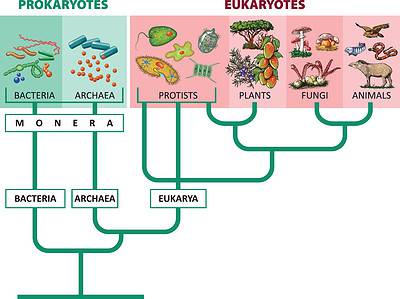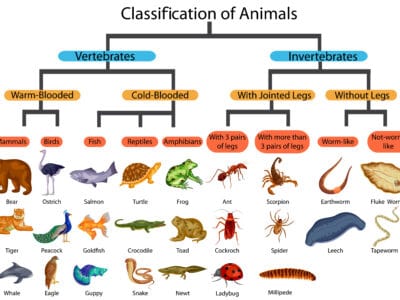Kingdom represents a taxonomic category, one below Domain, in a traditional, five-classification scheme. Within the conventional scheme, Kingdom represents organisms within six categories: animals, plants, fungi, protozoa and eukaryotic algae, and bacteria.
Kingdom: Animals
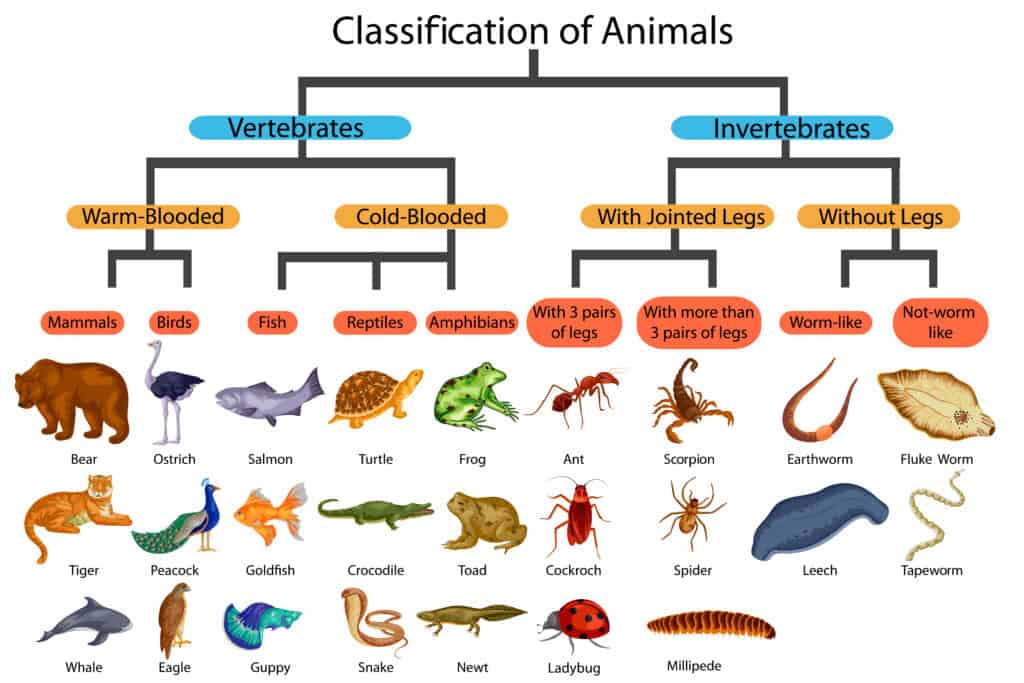
Animals are multicellular eukaryotes, and they all belong to the Animalia biological kingdom.
©Vecton/Shutterstock.com
Animals are the single largest out of the five, classical schemes and include invertebrates and vertebrates. As the largest and most diverse of the five, the animal kingdom includes mammals, birds, amphibians, reptiles, insects, mollusks, and more.
Plants

Every organism that utilizes cellulose and photosynthesis — from trees and grass to flowers and fruit — is part of the Plantae kingdom.
©Lillac/Shutterstock.com
Though it’s not the largest, the plant kingdom is one of the oldest and it includes everything that utilizes cellulose and photosynthesis. Most of the species are immobile and release oxygen while taking in carbon dioxide.
Fungi
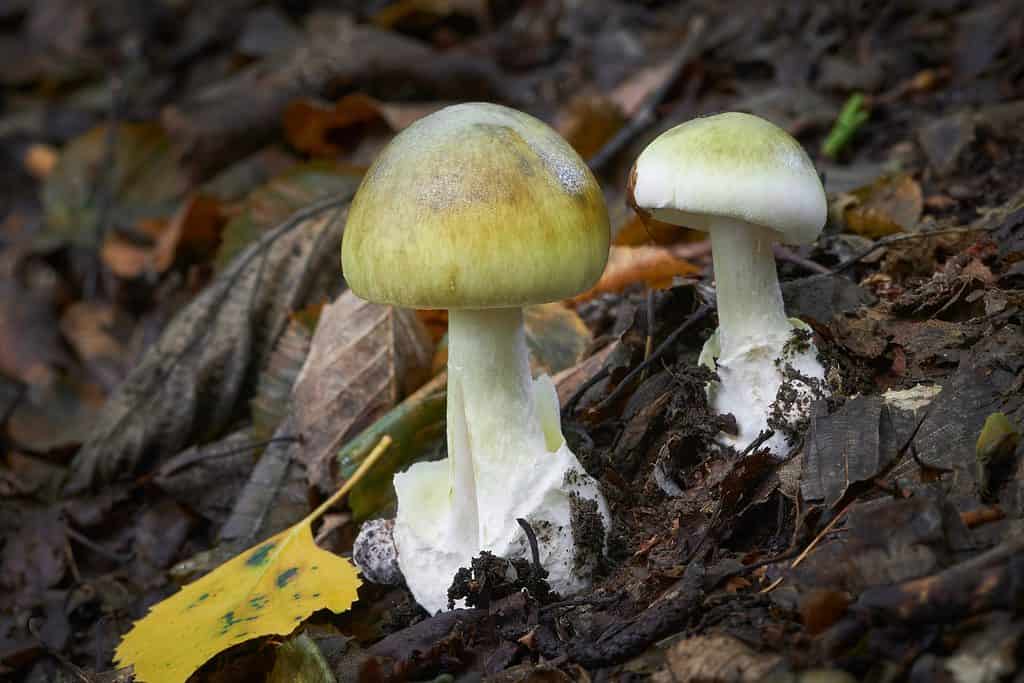
Fungus kingdom members range from mushrooms to yeast, mold, and the like.
©Adrian_am13/Shutterstock.com
Mushrooms, toadstools, mold, yeast, and multicellular, aerobic organisms encompass the fungi kingdom. Fungi typically reproduce by the release of spores, much like plants reproduce through seeds. As the spores spread, they take root and grow, feeding on the conditions within the surrounding environment.
Protista
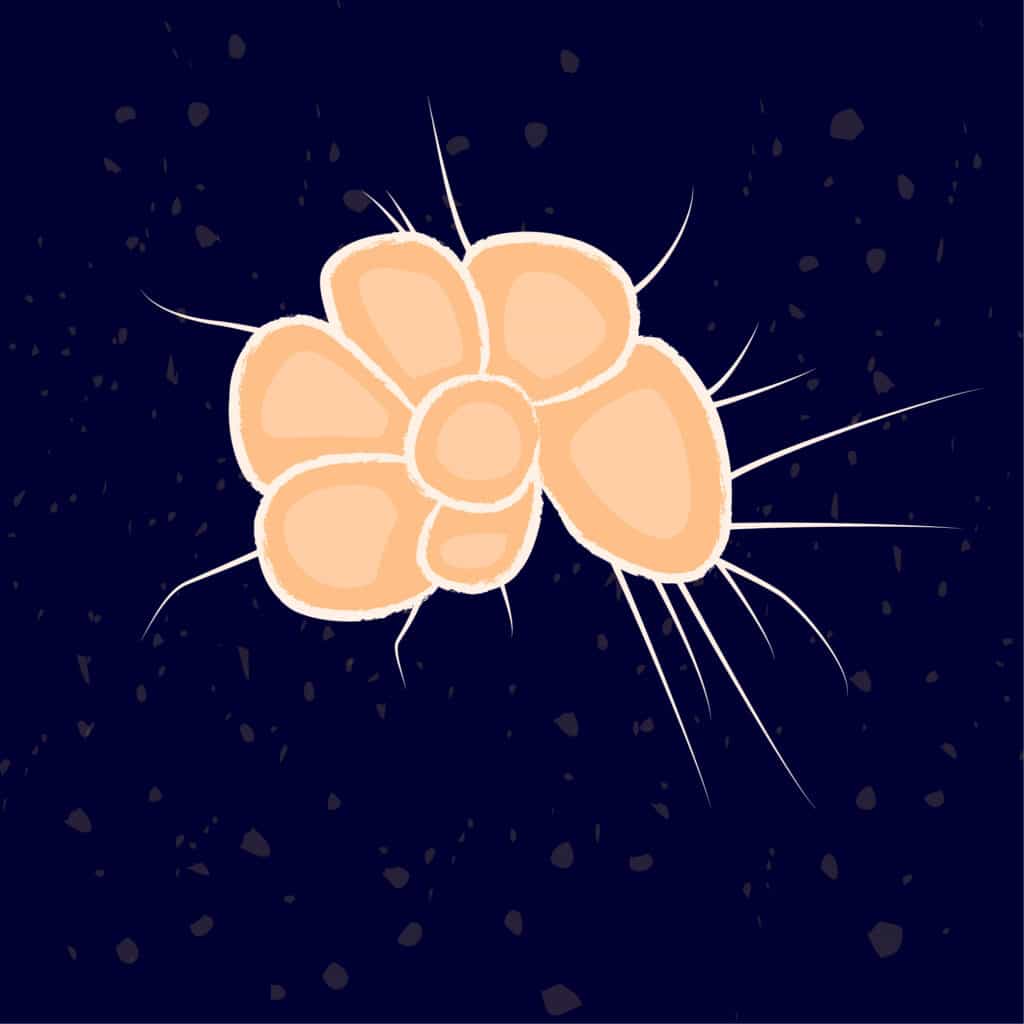
Protists are eukaryotic organisms that aren’t animals, plants, or fungi. As single-celled organisms, the kingdom includes protozoa and eukaryotic algae. Pictured is a vector illustration of a single-celled eukaryote Xenophyophorea, a protozoan.
©Blue bee/Shutterstock.com
Many of the organisms within the Protista kingdom are confusing. The only organisms that fall under protozoa and eukaryotic algae are non-plants and non-fungi. These organisms are some of the most difficult to categorize.
Monera (Bacteria)
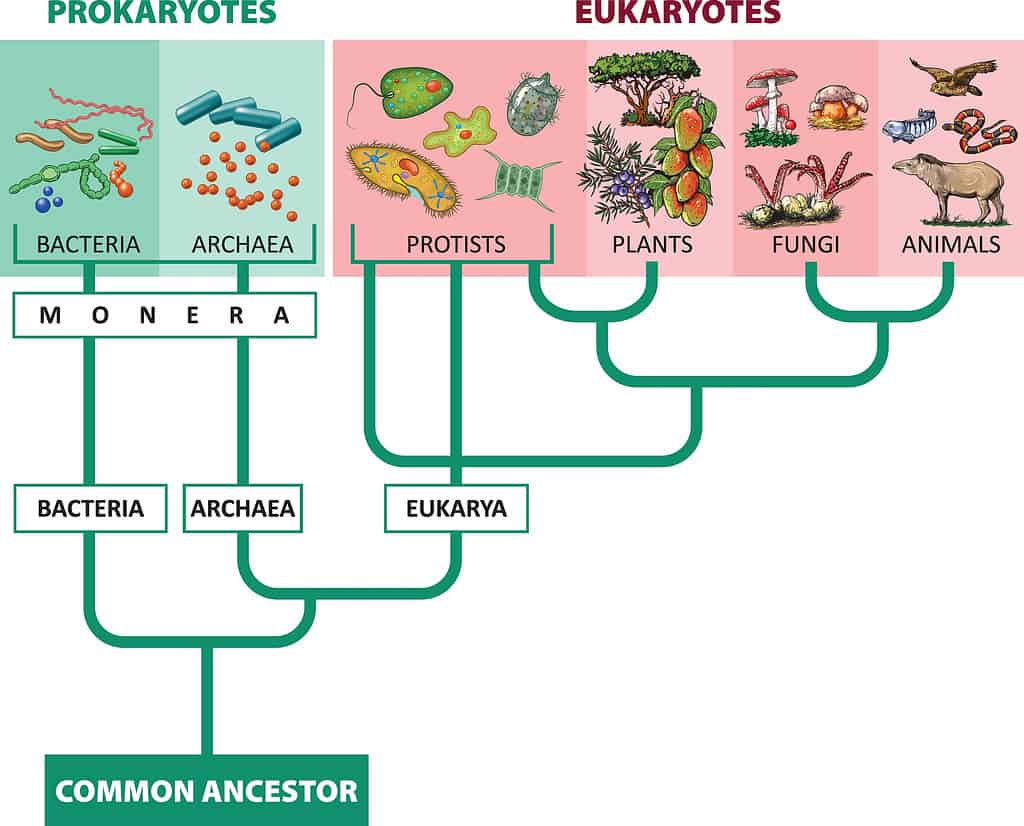
Prokaryotes and bacteria make up the Monera kingdom. They’re all microscopic, single-celled organisms.
©EreborMountain/Shutterstock.com
Prokaryotes and bacteria make up Monera. Almost all are completely microscopic and are single-celled organisms that lack an easily definable nucleus. Most bacteria are aerobic and heterotrophic and archaea are anaerobic.
The Classification System: Extra Kingdom
The conventional classification system is the one taught in most schools today and is still the generally accepted method for the classification of living organisms. However, there are challenges to the norm, including a sixth kingdom by separating bacteria and archaea.
There is also a potential sixth, with a specific sub-species of algae, separate from the other eukaryotic algae. These algae are chromista and some scientists believe a new kingdom should classify them.

